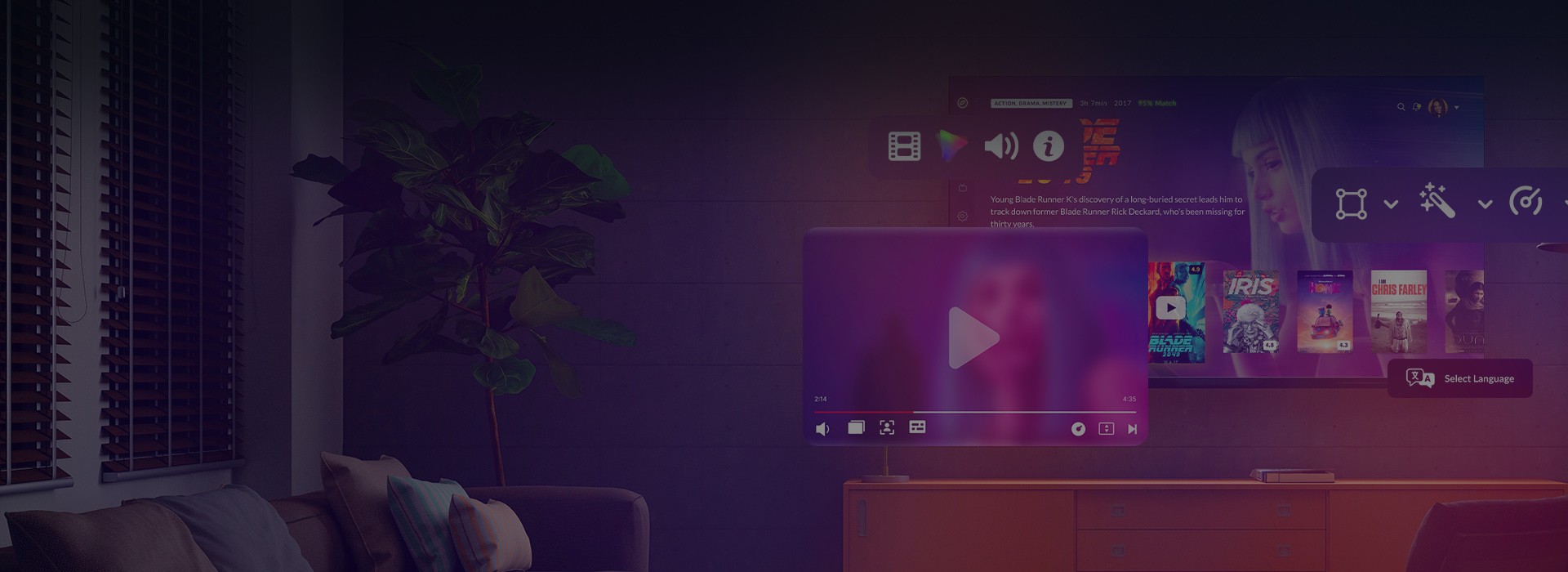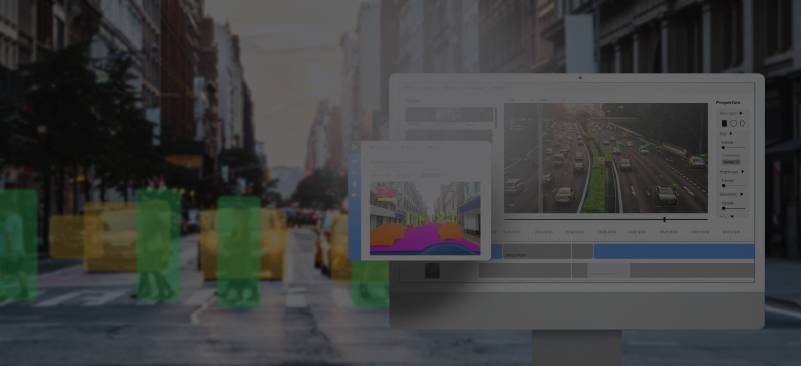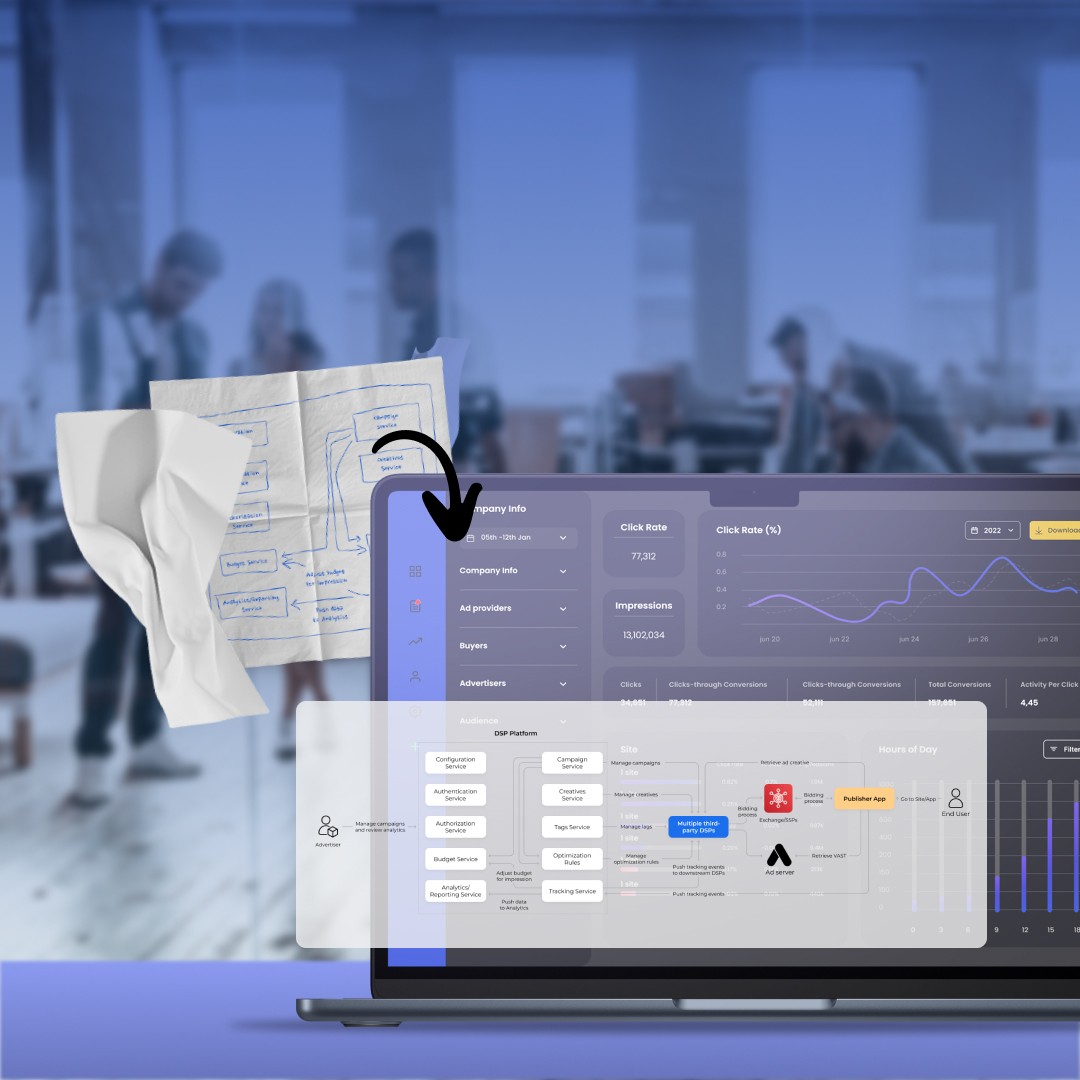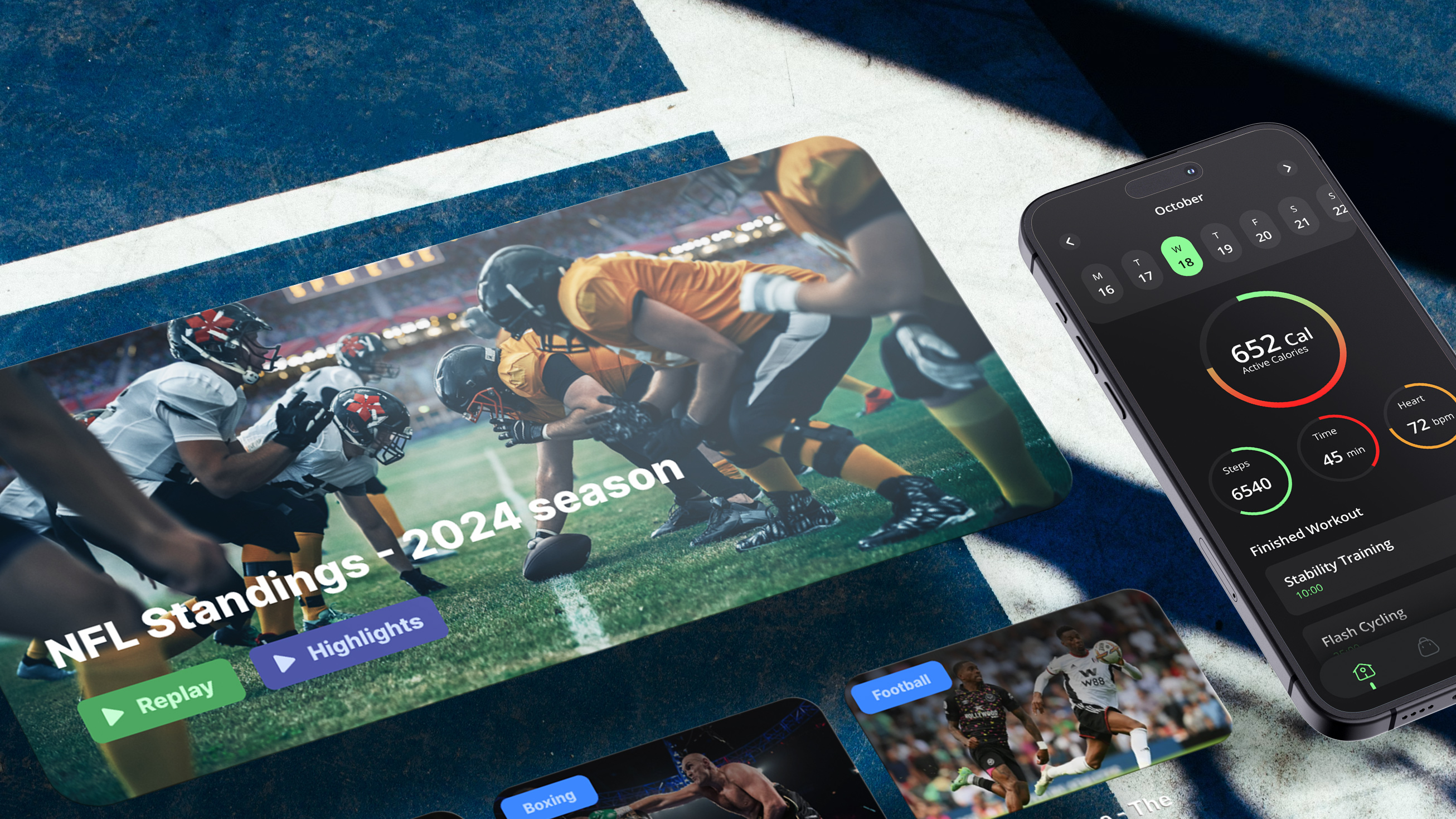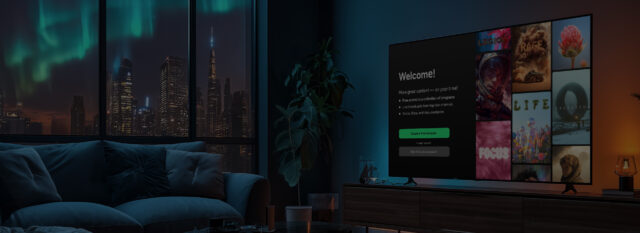TV is still on. Phones are buzzing. Tablets are open. And your audience? They’re everywhere — often all at once.
Today, people consume content across multiple devices, switching from screen to screen without a second thought. That’s where multiscreen advertising steps in: not just to follow the viewer, but to engage them in the right way, in the right place, at the right time.
So, what is multiscreen advertising exactly? It’s an approach that delivers marketing messages across several devices (Smart TVs, smartphones, tablets, laptops) in a coordinated or complementary manner. It’s not just about visibility; it’s about relevance. And in an attention economy, that changes everything.
According to Industry ARC research, the global multiscreen advertising market is projected to reach $18202.1 million by 20301. Meanwhile, Nielsen research shows that over 73% of internet users regularly combine TV viewing with other connected devices2. For advertisers, this means that relying on a single-channel strategy is not only outdated but also costly.
The rapid growth and success of global distribution services and lightning-fast shifts in video industry trends come with a downside, and advertisers are the ones feeling the hit first of all.
When some of them succumb to faulty beliefs about the ways viewers engage with content, they greatly undermine TV and video advertising reach, wave goodbye to profits, and in the worst scenarios, even set TV advertising campaigns up for failure.
Can Oxagile just let things stay that way? We believe in making smart data-driven choices and supporting others in doing the same, so the answer is a resounding no. And when Comcast, a major telecommunications and media corporation, took a deep dive into understanding the behaviors of TV and streaming service users in their study, we couldn’t resist jumping into the mix.
In this article, we’re set to share the key insights from their report, alongside our own firsthand AdTech experience, to clear up any myths that don’t let advertisers create ad tactics that precisely resonate in the dynamic landscape of multiscreen video advertising.
Myth #1
Viewers are becoming mobile and ditching their big TV screens
It’s tempting to think that mobile rules the world. After all, phones are always within reach, and Gen Z seems to have been born with one in hand. But does that mean the TV screen is fading into irrelevance? Not quite.
In fact, connected TVs remain the centerpiece of streaming in households. Recent data shows that 82% of streaming viewing in the US still happens on television screens3. In Europe, the gap has narrowed, but TVs still lead — around 53% of ad views occur on big screens, compared to 47% on phones and tablets4.
Reality check
Sure, phones are perfect for watching a clip under the covers or avoiding eye contact on a train, but when people want to truly relax, they turn to the big screen. No need to hold anything, squint at a small display, or worry about battery life. The couch, the remote, the TV — it’s still the ultimate combo for immersive viewing.
The appeal of the big screen isn’t just about comfort; it’s also about connection. People lean back, settle in, and are more likely to pay attention, which translates into measurable results.
A winning strategy
“Engage with the audience on the biggest display within the household, because the unaided recall will be 2.2 times higher, and the intention to buy will be 1.3 times greater than when the same advertisement is shown on a mobile. ”
Myth #2
FAST is a non-premium option like AVOD
Let’s be honest, the name doesn’t help. “Free Ad-Supported TV” might sound like a lesser cousin of AVOD, a kind of low-budget backup channel. But that’s not how audiences experience it.
FAST platforms continue to gain ground, not because they’re flashy or new, but because they feel familiar. The channel-like structure, lean-back experience, and zero-cost access make them appealing to viewers who don’t want to spend time browsing or deciding what to watch.
This return to passive discovery, paired with premium content from recognizable brands, makes FAST a surprisingly strong player in today’s video ecosystem.
Reality check
FAST mirrors the classic TV experience while offering modern on-demand variety. Instead of feeling limited, users feel relaxed, and advertisers get a captive, lean-back audience that’s ready to engage.
A winning strategy
“Promote the services or products through high-quality, expertly crafted videos, because they usually stick in viewers’ minds 58% better compared to simple videos made by users.”
All nuances of FAST uncovered
Explore our article to discover the array of benefits it brings, gain insights into the current challenges advertisers are facing, and unlock original strategies to address these issues.
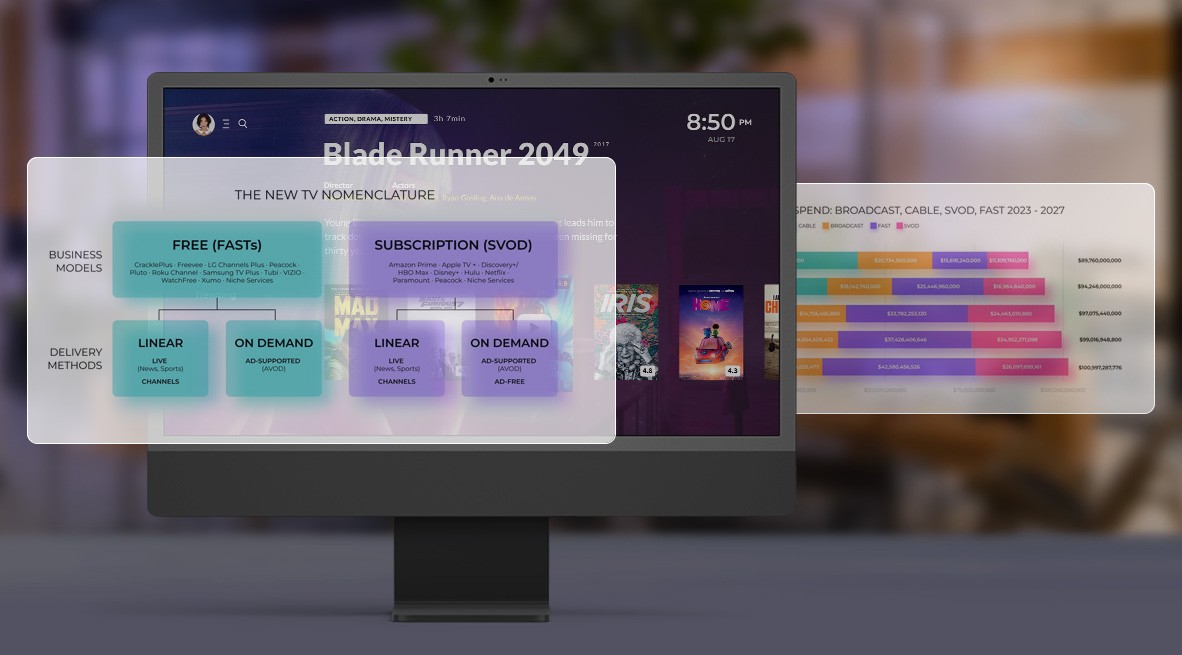
Myth #3
Linear television has almost outlived its era
Streaming may be booming, but don’t count out linear TV just yet. It still commands massive daily engagement, especially among audiences who crave simplicity, routine, and live content.
According to Nielsen5, the average U.S. adult spends over 11 hours per day listening to, watching, reading or generally interacting with media. Sports events, news, and reality shows remain strongholds for traditional broadcasters, while for advertisers, they offer reach at a scale most streaming services can’t yet match.
Reality check
People are still dedicating close to 6 hours a day to the ritual of watching traditional TV.
Most likely, it’s all about that convenience factor — the ability to sit down, surf the channels, and stumble upon something intriguing. And considering that the majority of modern TV watching consists of live content, it’s safe to say there’s no match for the joy of turning to your sporting event viewing companion and exclaiming, “Hey, did you see that?”.
The passive discovery experience is a hidden strength. People don’t need to decide what to watch — they just tune in. That simplicity, combined with real-time shared experiences, keeps linear TV relevant, especially for live programming.
A winning strategy
“Spend about 20-30% of your premium video budget for ads within streaming content and allocate the rest of the funds towards traditional TV.”
Myth #4
Ads generate the highest profits during prime time
There’s something magical about prime time — the buzz, the reach, the perceived value. For decades, advertisers raced to secure those golden hours between 8 PM and 11 PM. But that rulebook is changing.
Recent research shows that 72% of TV and streaming viewership now happens outside the traditional prime-time window6. Viewers have reshaped their routines, choosing flexibility over programming schedules, and advertisers who still cling to prime-time-only strategies risk missing out on massive chunks of engaged audiences.
Reality check
People no longer organize their lives around network schedules. They stream a drama at noon, binge reality shows after midnight, or turn on live sports in the afternoon. Prime time still matters, but it’s no longer the main event. For advertisers, that’s both a challenge and an opportunity.
The upside? Advertisers can now unlock better ROI by reaching more niche, targeted audiences in off-peak windows, often at a fraction of prime-time costs.
A winning strategy
“Distribute the budget across different months, networks, and times of day.”
Myth #5
Ad breaks take their sweet time on linear TV, unlike the ones on streaming
We’ve all been there: stuck in a never-ending ad pod, wondering how we went from watching a thriller to suddenly craving cat food. It’s easy to assume that streaming is smarter, faster, and better about ads. But is that really the case?
According to recent studies, over a third of all ad pods on streaming platforms last longer than 3 minutes7 — roughly the same average length as commercial breaks on traditional linear TV.
Reality check
Streaming didn’t kill the long ad break — it simply changed the wrapper. Whether on FAST channels or AVOD platforms, viewers often sit through multiple unskippable ads, many of which run back-to-back for minutes. The assumption that streaming equals shorter exposure just doesn’t hold up.
The lesson for advertisers? People have grown used to ad-supported viewing. What matters isn’t the length — it’s the value. Targeted, well-crafted campaigns can thrive in both linear and streaming formats, regardless of break duration.
A winning strategy
“Allocate 70% of impressions to broad, data-driven TV and streaming, while designating the rest 30% to highly targeted, addressable strategies.”
Wrapping up
Multiscreen TV advertising today is more than a tactic — it’s a mindset.
It’s about meeting your audience where they are, across screens, time zones, and routines. And it’s about unlearning outdated assumptions that no longer reflect how people actually consume content.
Beyond these common misconceptions, there’s one remarkably widespread trend that’s surprisingly true: users are becoming accustomed to personalized advertisements, and advertisers must embrace this regardless of the channels they use — whether it’s streaming platforms, OTT solutions, or linear TV.
Success in this landscape means moving past channel silos. It means treating TV, CTV, mobile, and desktop not as competing formats, but as parts of a connected strategy — one that adapts to real viewer behavior and delivers measurable results.
If you’re wondering how to make that shift, without guesswork, we’ve got you. At Oxagile, we help companies turn complexity into clarity. Whether it’s designing cross-platform ad logic, building custom attribution engines, or optimizing spend across FAST, AVOD, and linear channels, we bring years of hands-on AdTech expertise to every engagement.
If you’re curious to learn more about the ways to effortlessly make every advertisement user-centric or would like to delve deeper into safeguarding yourself from choosing the wrong advertising strategy, Oxagile would be happy to share with you the know-how on achieving this using real-life examples from our recent successful AdTech projects.
Sources:
1. Industry ARC — Multi Screen Advertising Market
2. Nielsen — Connectivity is driving how Americans are engaging with TV
3. Comcast Advertising — Streaming Viewership and Big Screen Trends
4. SENAL News — CTV Grows Its Share of All Ad Views in Europe
5. Nielsen — Time Flies: U.S. Adults Now Spend Nearly Half a Day Interacting with Media
6. Nielsen — Streaming Reaches Historic TV Milestone, Eclipses Combined Broadcast and Cable Viewing For First Time
7. Media Post — Streamers’ Ad Pods Duration Grows

